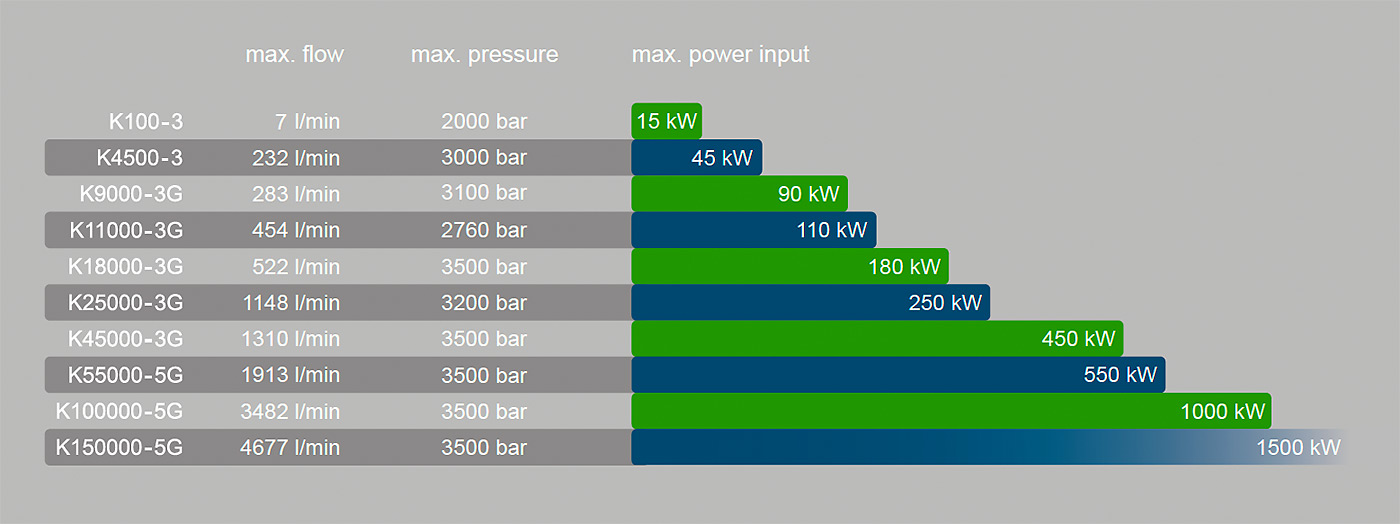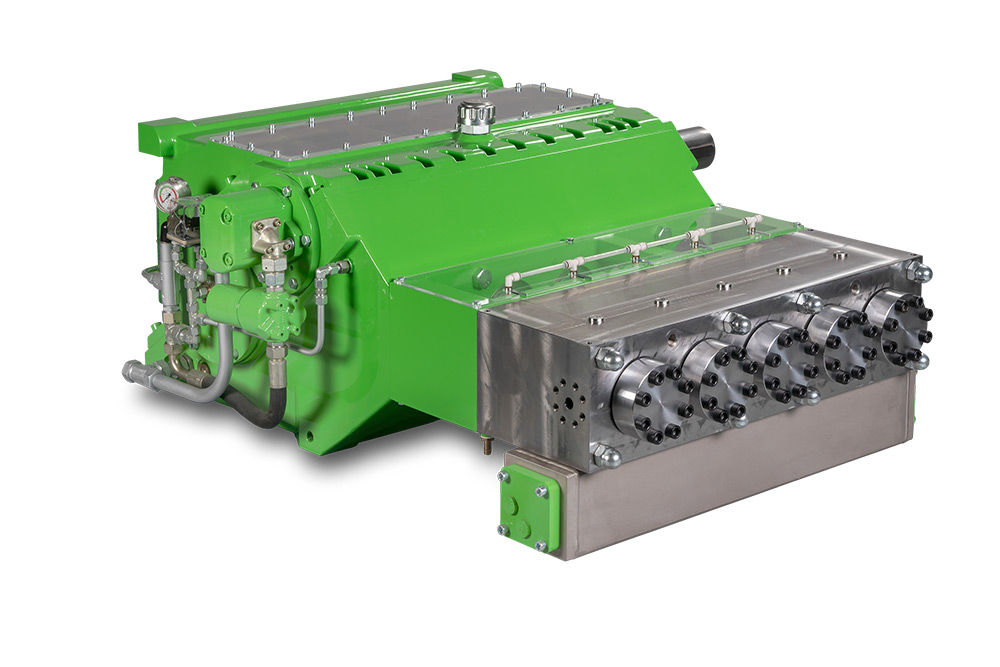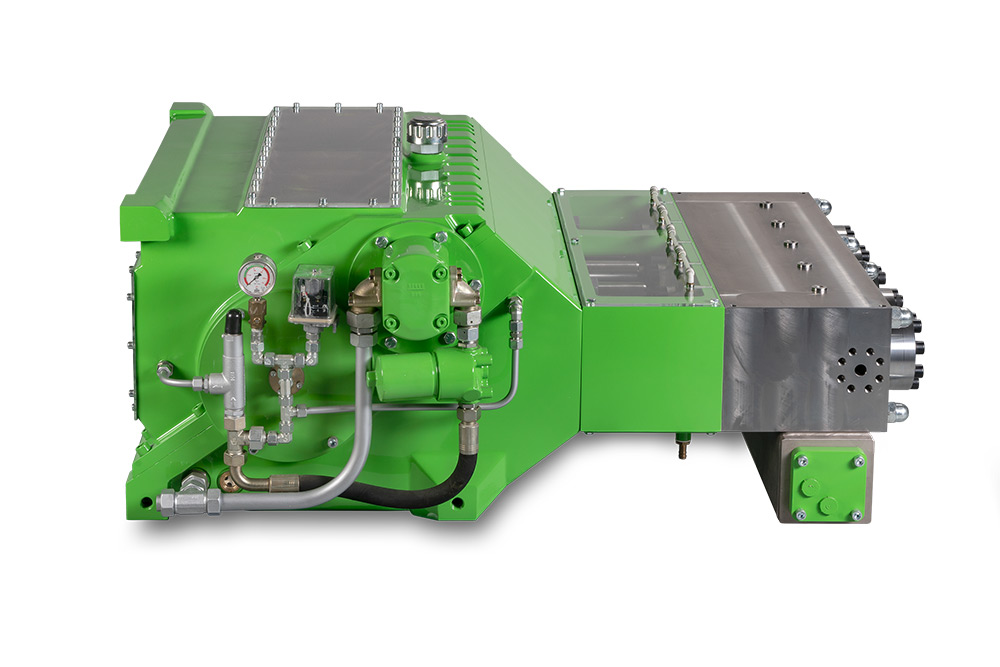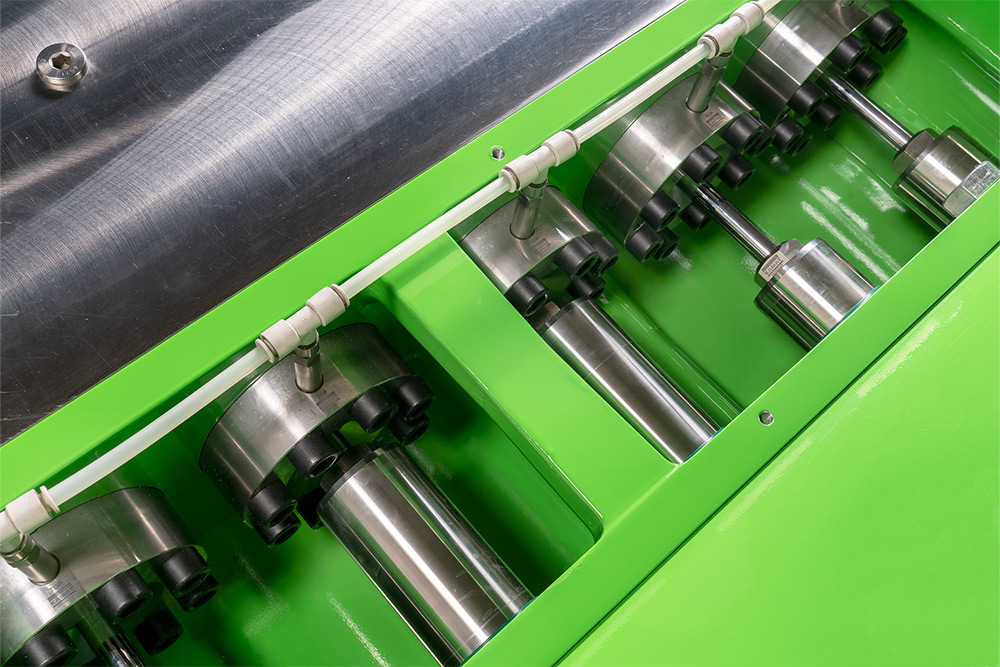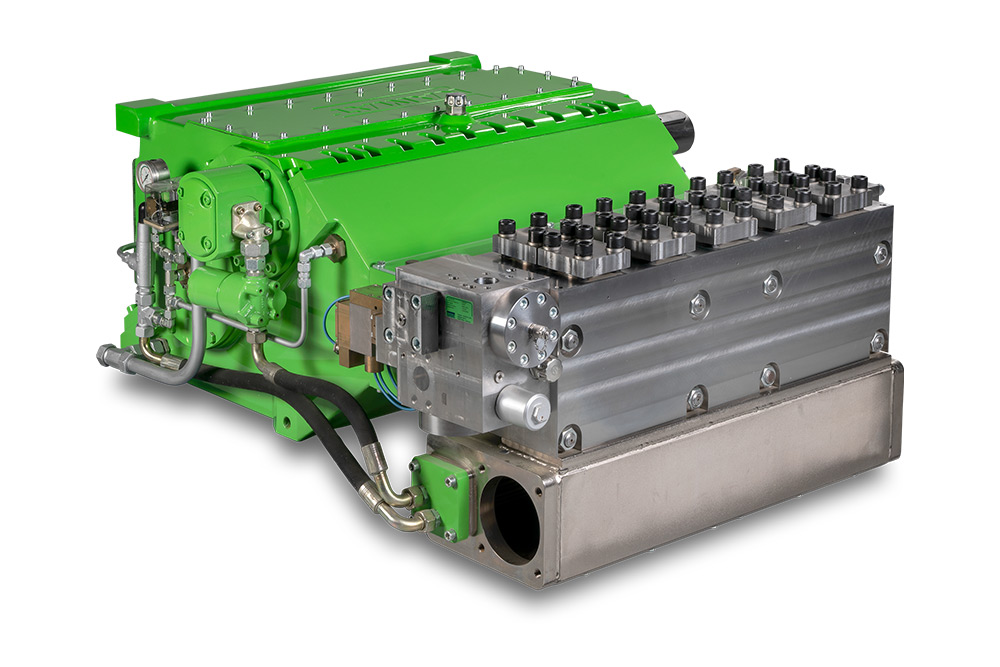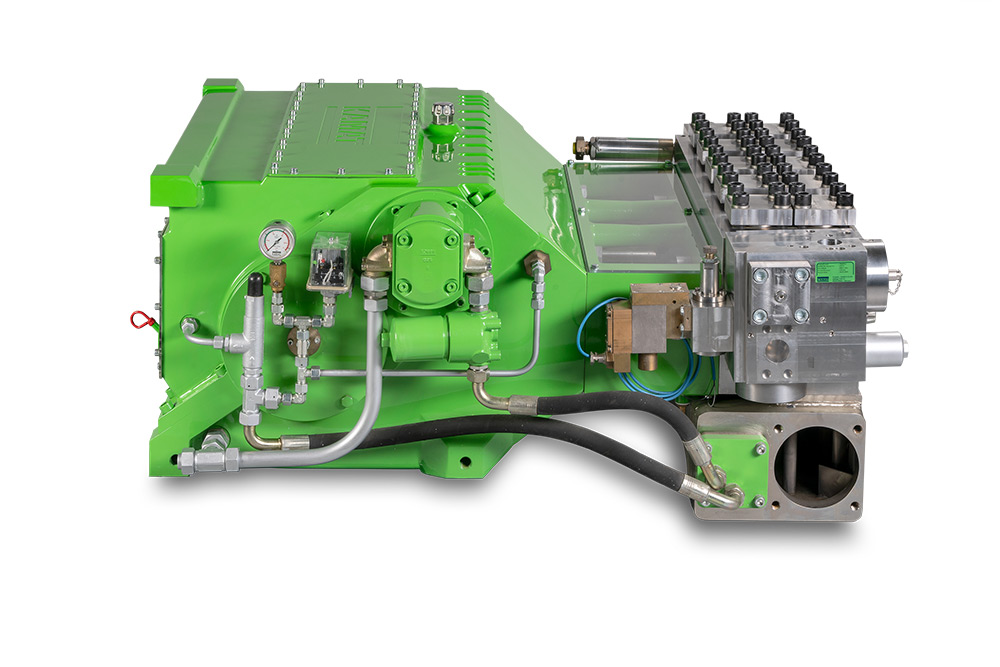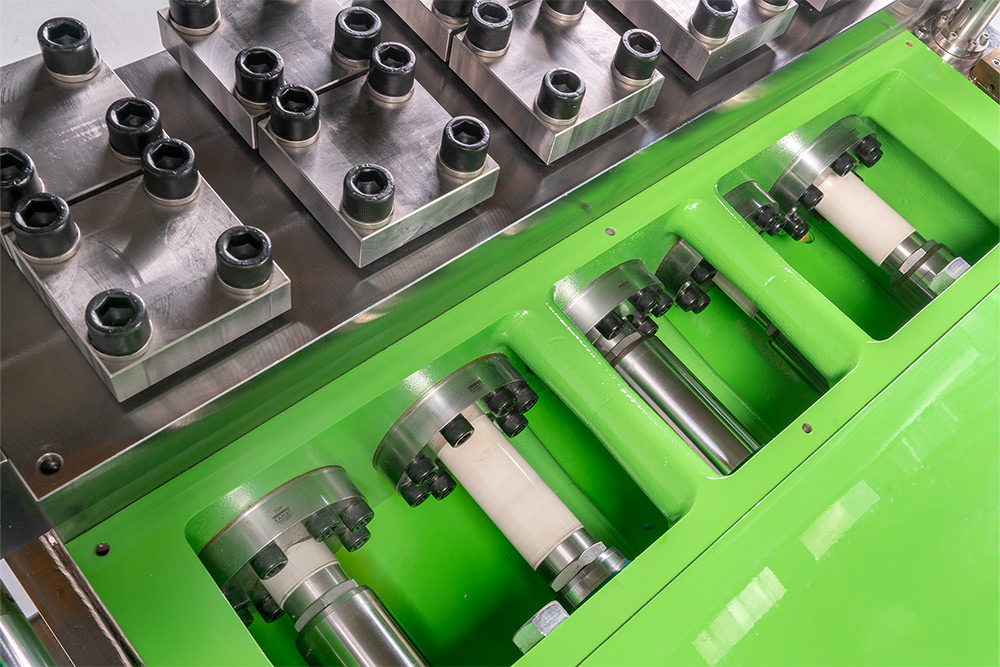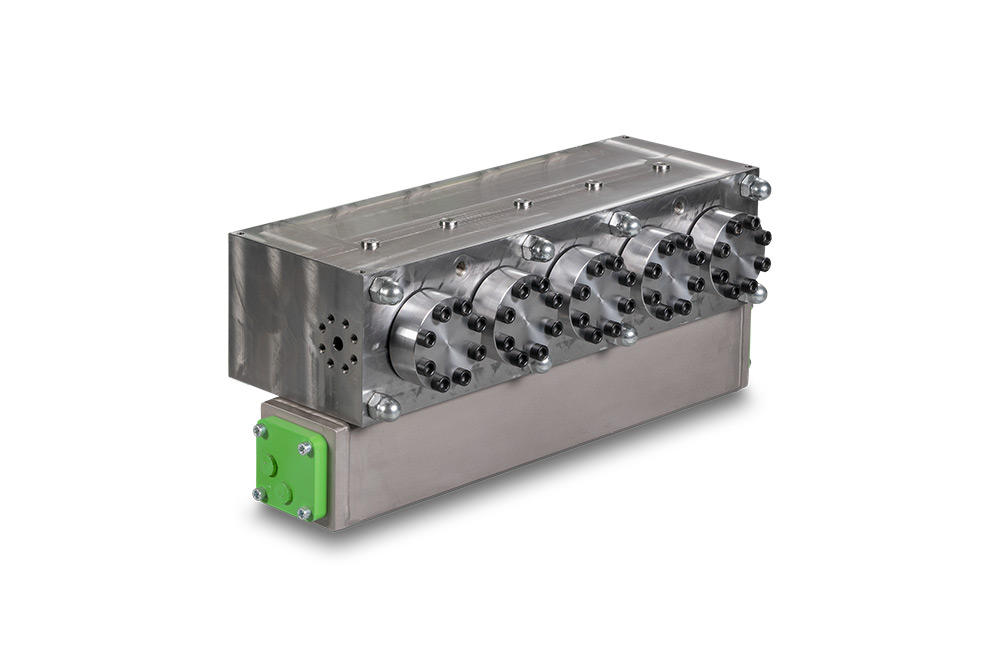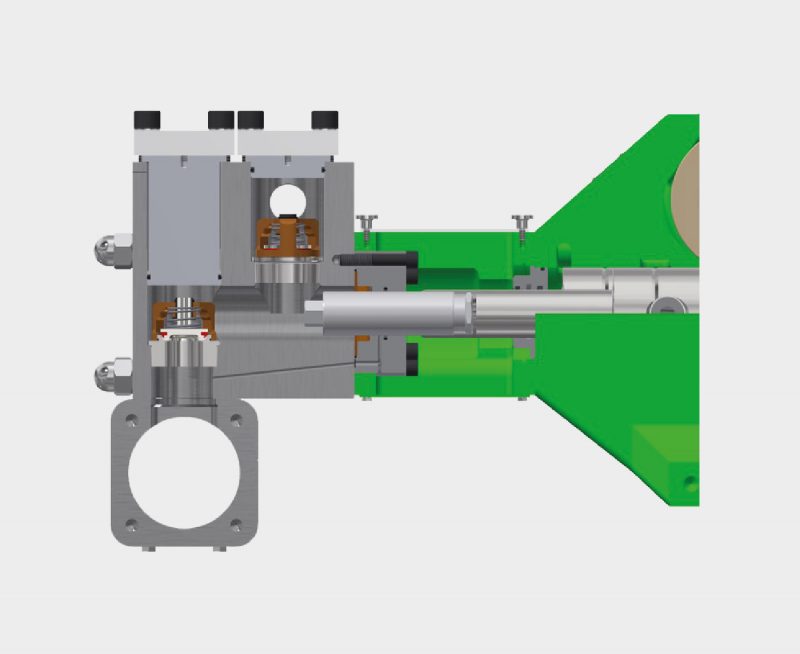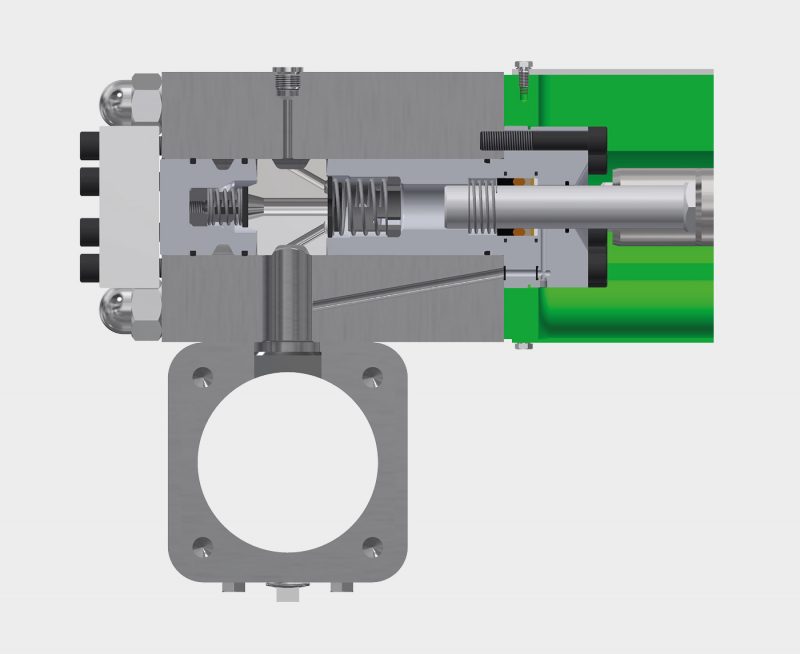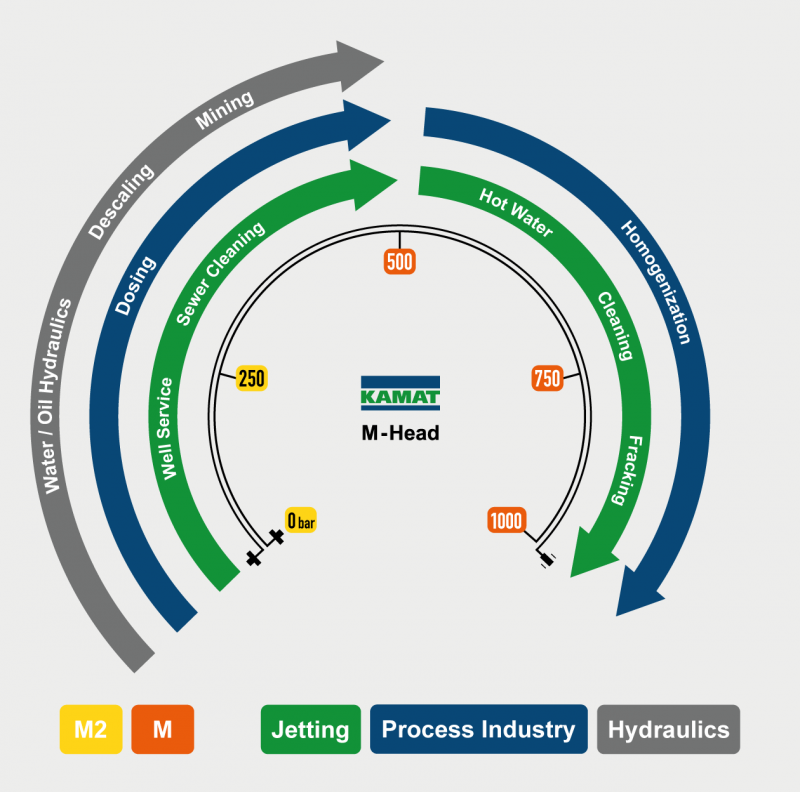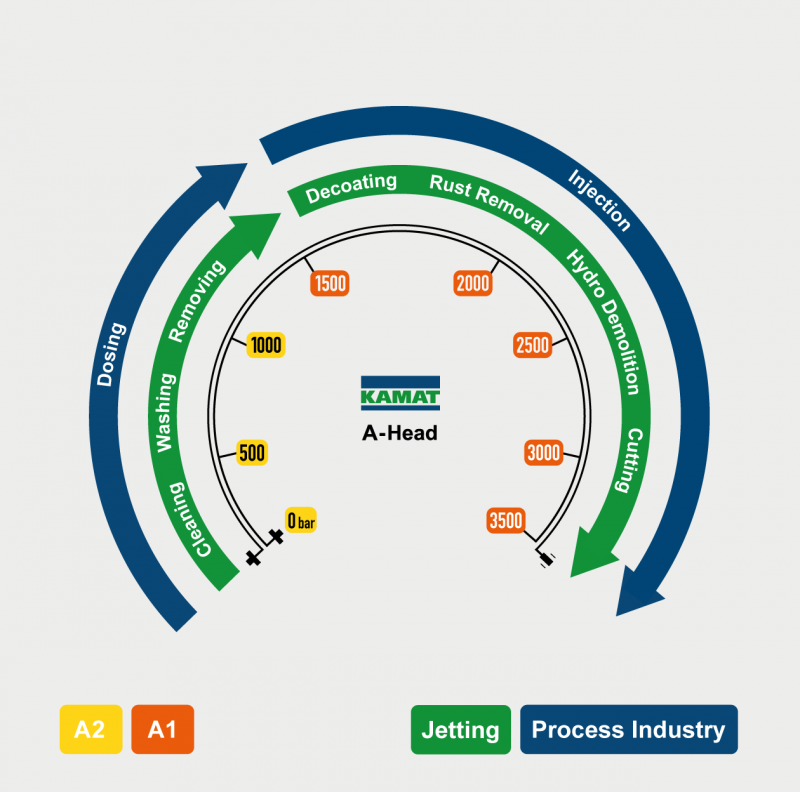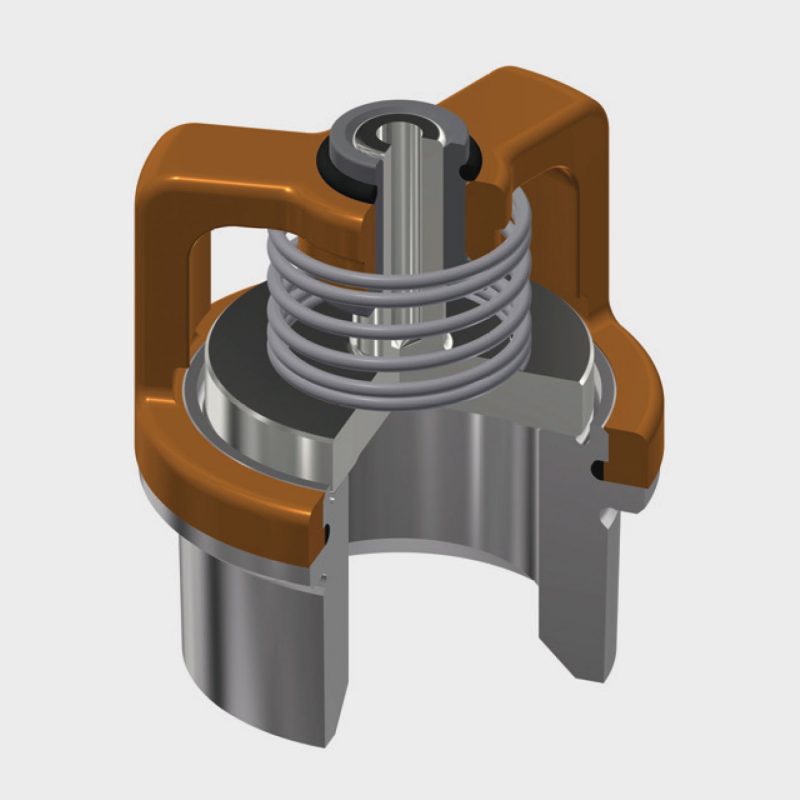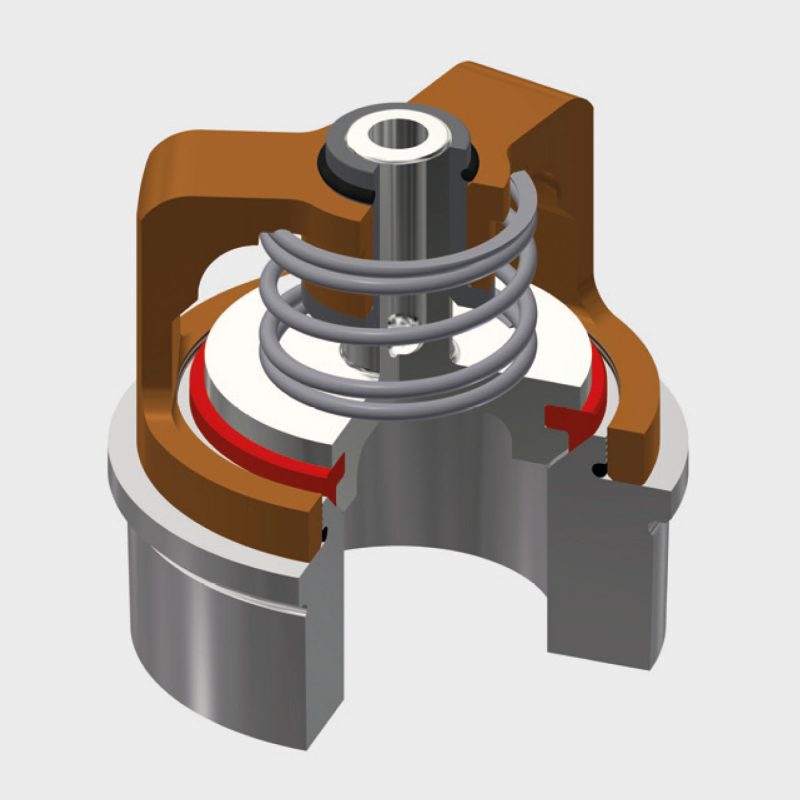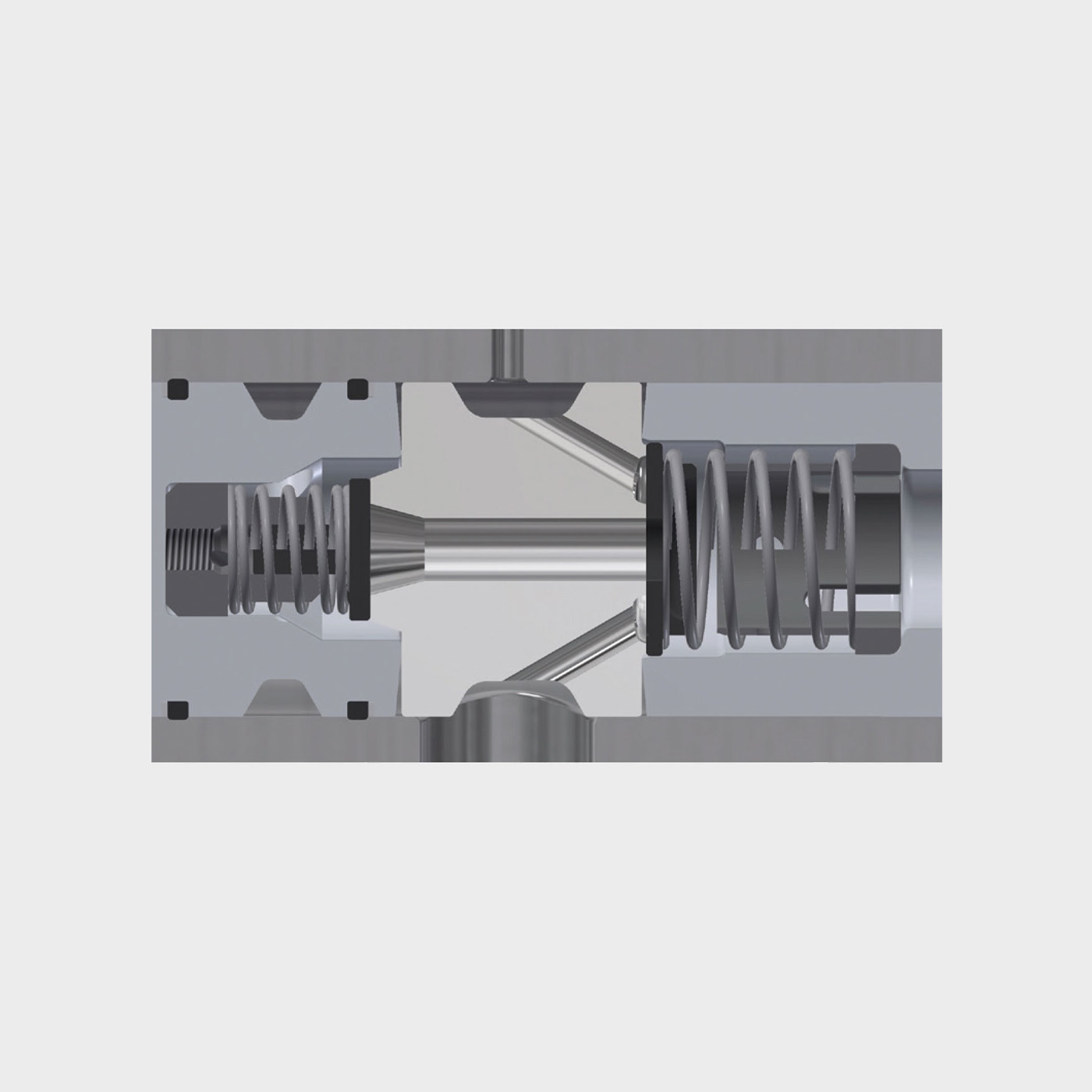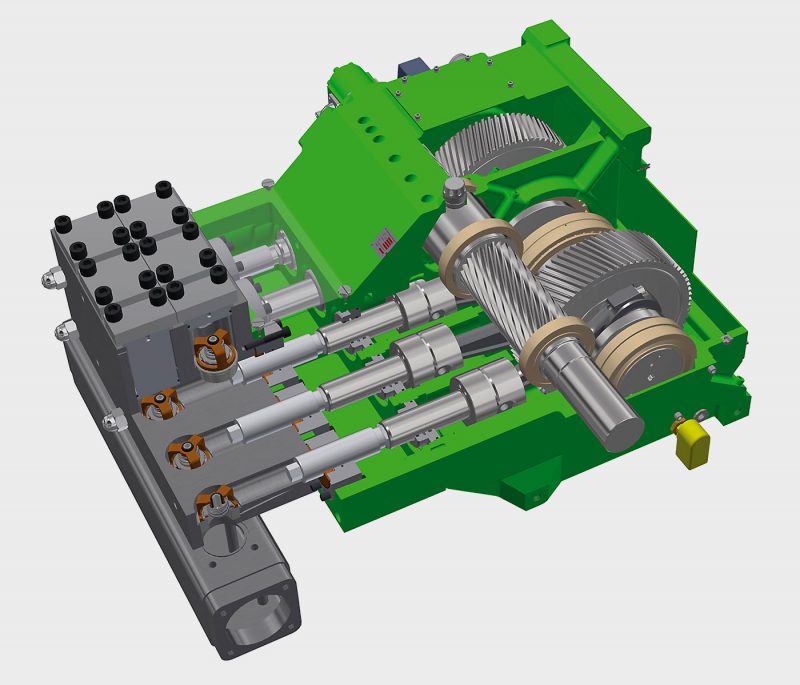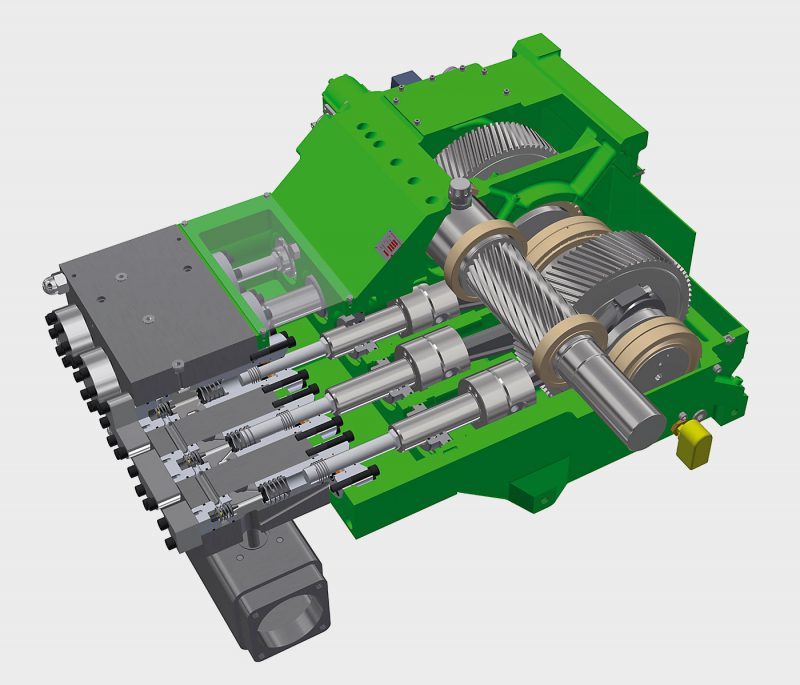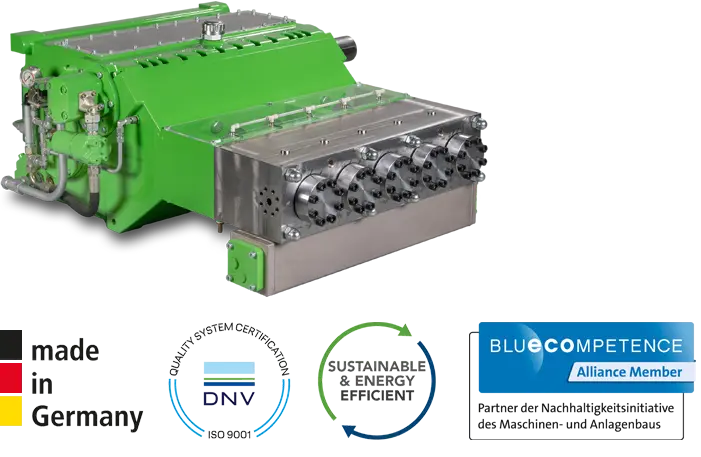What we do on a daily basis!
Constructers and users are not hit by new question concerning high-pressure technology daily. We are! We try to answer and unriddle freshly uncovered questions every day. Check our specialist know-how!
We construct, build and take care of high-pressure systems and pumps every day. User, scientists and students have reached out to us daily, asking question on high-pressure pumps since 1974. But we don’t want to keep all that experience to our self. Come and ask us! May it be questions concerning a new construction, modernization, or damage: we have the specialists to consult you.
Acceleration Loss
The loss of performance as a result of discontinuous move of the water column in the suction line. Acceleration loss has taken into account for any design of the suction line of the pump. Acceleration loss can lead to vapor pressure in the suction line and therefore to cavitation in the pump. Acceleration losses have to be taken into account for sizing the suction line.
ATEX
The rules for placing devices and products on the market in potentially explosive atmospheres are specified in Directive 2014/34/EU (ATEX) of the European Parliament.
ATEX = Atmosphere Explosible – potentially explosive atmosphere
The purpose of this directive is to ensure that devices and protective systems may only be placed on the market if they are manufactured in accordance with the state of the art in the community in such a way that they ensure the safety of people when they are properly installed and maintained and used as intended and, if necessary, of pets and farm animals as well as the observance of material assets.
The potentially explosive areas are divided into Ex zones.
Potentially explosive areas due to gases, mist and vapours:
Zone 0:
Area in which there is a permanent or long-term explosive atmosphere consisting of a mixture of air and flammable substances in the form of gas, vapor or mist.
Zone 1:
Is the area in which an explosive atmosphere consisting of a mixture of air with combustible substances in the form of gas, vapor or mist can be expected to occur during normal operation.
Zone 2:
Is the area in which it is not to be expected that an explosive atmosphere consisting of a mixture of air with flammable substances in the form of gas, vapor or mist will occur during normal operation, and if it does, then only rarely or only briefly.
Potentially explosive areas due to dust:
Zone 20:
Is the area in which an explosive atmosphere in the form of a cloud of combustible dust in the air is present continuously or for long periods or frequently.
Zone 21:
Is the area in which an explosive atmosphere in the form of a cloud of combustible dust in air can be expected to occasionally occur during normal operation.
Zone 22:
Area in which an explosive atmosphere in the form of a cloud of combustible dust in air is not to be expected during normal operation, but if it does occur, it is only for a short time.
Potentially explosive areas in mining from methane gas and coal dust:
The standards DIN EN ISO 80079-36 and DIN EN ISO 80779-37 are of particular importance for the use of non-electrical devices in potentially explosive areas.
EN ISO 80079-36
- Non-electrical equipment for use in potentially explosive atmospheres
- Basics and requirements
DIN EN ISO 80079-37
- Non-electrical equipment for use in potentially explosive atmospheres
- Protection through structural safety “c”, ignition source monitoring “b”, liquid immersion “k”
KAMAT has also met these requirements and has demonstrated compliance with the explosion protection guidelines for the products pumps and valves in accordance with directive 2014/34/EU, DIN EN ISO 80079-36 and DIN EN ISO 80079-37 through a conformity assessment, so that these products are ATEX can be delivered.
They are specially marked according to their suitability and can be used as follows:
- Zone 1 device category 2G device protection level EPL Gb
- Zone 2 device category 3G device protection level EPL Gc
- Zone 21 device category 2D device protection level EPL Db
- Zone 22 device category 3D device protection level EPL Dc
- Mining equipment category M2 equipment protection level EPL Mb
Depending on their suitability, the KAMAT high-pressure pumps and KAMAT valves are given an Ex mark.
KAMAT pumps can also be delivered in accordance with the technical instructions for keeping the air clean.
Base Frame
The major portion of a pump unit that encloses and supports all other components of the pump installation.
Capacity
The total volume throughput per unit of time at suction conditions. It includes both liquid and any dissolved or entrained gases (reciprocating pumps are not tolerating gas). For all practical purposes this can be considered the volume flow rate in the suction pipe not considering compression of water. The standard unit of KAMAT pump capacity is liters per minute also used as m³/h.
Cavitation
The state where fluid pressure drops below vapor pressure, causing the liquid to begin to change from a liquid to a gas and boil. Usually occurs in the chamber between the suction and discharge valves during the suction stroke, and often sounds like a mechanical knock. Cavitation results in the formation of gas bubbles, or cavities, in the fluid that cause vibration and damage to components when they collapse and is therefore dangerous for components.
Compensator
A component for vibration isolation between a pump, a device and the periphery. In pipelines, mostly a flanged part with a flow section made of flexible material, e.g. rubber. It could also just be a flexible hose line.
Dampener
A device that reduces pressure pulsations in the suction or discharge piping. This may be referred to as a suction stabilizer, accumulator, or discharge resonator or discharge pulsation dampener.
Discharge Pulsation Dampener
The discharge pulsation of a plunger pump depends among other things on speed (frequency) and displacement of the individual plunger. Higher speed means higher pulsation frequency and higher displacement volume leads to higher pulsation amplitude. When applications require a maximum permissible level of pulsation (amplitude) either resonators or bladders could be used to smooth the pressure signals to the acceptable level.
Dead Volume
Ideally the plunger is displacing all liquid volume inside the pump head duringthe suction stroke. As this is technically almost impossible there is a volume left which cannot be displaced, the dead volume. At lower pressures this has no or minor effects to the volumetric efficiency of a plunger pump. With higher pressure and compressibility (H2O ~ 4% at 1000bar) of the liquid this effects the volumetric efficiency negatively. Therefore the dead volume is reduced to a minimum.
Displacement
The volume swept by all pistons or plungers per time. This term is typically expressed as liters per revolution. Not considering any losses it is the displacement volume of one plunger for one stroke multiplied with the number of plungers
Gear Box
The portion of the pump that converts supplied rotary motion into linear motion used by the Fluid End to move the plungers back and forth including a gear reduction.
Hochdruckpumpe
Eine Kolbenpumpe, die von einem Schubkurbelmechanismus angetrieben wird. Verdränger-Pumpen sind meist Kolben-, Tauch-Kolben- („Plunger-“) oder Membranpumpen. Diese erfordern einen Antrieb mit einer rotierenden Welle, wie beispielsweise einem Motor oder einer Maschine als Energiequelle, während die Bewegung der Pumpelemente linear ist.
Mechanical Efficiency
Mechanical efficiency is the ratio, expressed as a percentage, of pump power output to the pump power input. The mechanical efficiency of reciprocating pumps is very high, typically >> 90%.
NPSHa
An abbreviation that stands for “Net Positive Suction Head available”. NPSHa is the total dynamic suction pressure, including the acceleration head and considering the vapor pressure of the fluid, available from the system at the pump suction connection. NPSHa for a reciprocating pump is normally expressed in units of meter of water.
NPSHr
An abbreviation that stands for “Net Positive Suction Head required”. This is the minimum total dynamic inlet pressure required by the pump for operation without cavitation. NPSHa should exceed NPSHr by at least 1,5 meter.
Piston Pump
A type of a positive displacement pump that uses a cylindrical seal (piston) mounted on a piston to drive fluid through the valves. The piston seal reciprocates within a stationary cylinder. This is different to any KAMAT pump.
Plunger Pump (Video)
A type of a positive displacement pump that uses a cylindrical plunger to drive fluid through the valves. The plunger reciprocates through a stationary of seals set fixed to the pump head known as packing.
Plunger pumps, by laypersons often just called piston pump, belong to the group of oscillating positive displacement pumps – one of the oldest pump types. The displacers in plunger pumps are moved/pressed by crankshafts which is integral to the pump and the pump has one or more cylinders. The displacer of this pump is called “plunger”. In contrast to piston pumps the plunger “dives” through a fixed seal into a sealed off working space, displacing the fluid. Since 1974 the company KAMAT is an experienced producer of plunger pumps in Witten, Germany. In this video KAMAT’s CEO Dipl. – Ing. Jan G. Sprakel explains the technology and some of the benefits of plunger pumps.
Power Pump
A reciprocating pump that drives the pumping element(s) using a crank mechanism. Power pumps are piston, plunger, or diaphragm pumps. All require a driver with a rotating shaft, such as a motor or engine, as a power source, while the move of the pumping elements is linear.
Product Name of the KAMAT high-pressure pumps
Product labelling reflects modular system – Naming described by means of an example
Therefore, our naming of every pump and accessory complies with exactly that key modular system and mirrors the modules used for that system. This is easiest explained when looking at the name of one of our KAMAT plunger pumps.
Plunger pump K55020-5G A1
All our pump designations or as we like to see them, names, consist of six separate modules.
- We have the K, standing for the line of the product. In this case: a KAMAT plunger pump
- A number varying in-between 4-6 digits, telling us what gearbox is used and the max. power input it is capable of
- An up to 3-digitnumber included in the description of the gearbox, but describing the diameter of the plungers used
- The number of plungers in the configuration
- The type of gearbox chosen to best suit the setup
- A letter telling what pump headversion is used
The uniform product labelling indicates nearly all relevant information of the pump
These names indicate almost all characteristics of the deployed pump. Only the materials used, flow rate, valve type, gear reduction and engine speed are not indicated in the designation. The advantages of this are vast, the greatest being easy understandability of the configuration resulting in fast communication between all company internal divisions and most importantly: the customer in need of consultation.
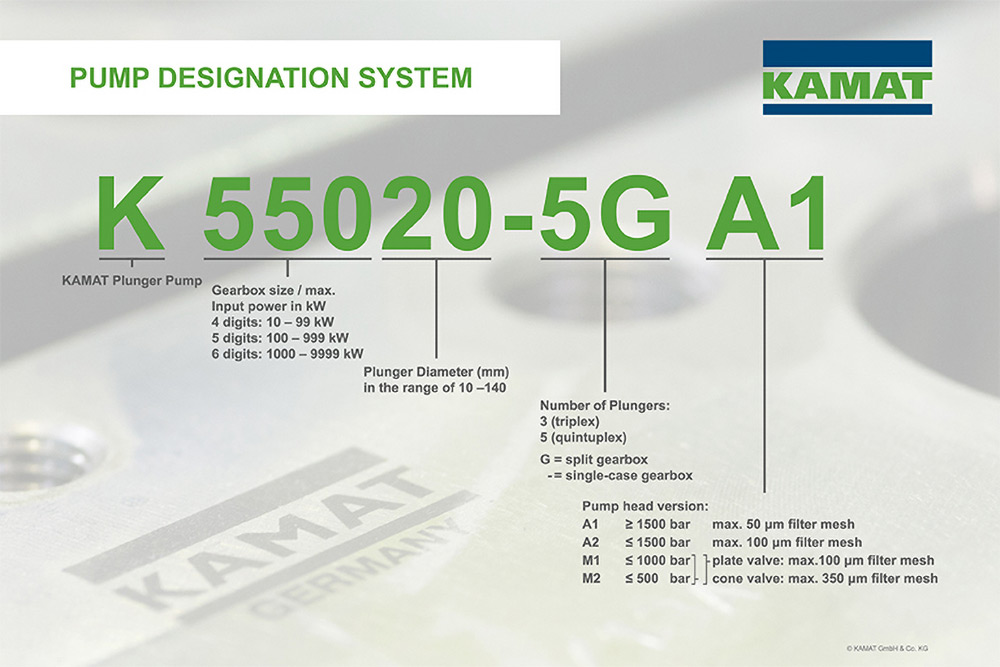
Pump Head Carrier
Often called lantern at KAMAT is the mechanical connection between the pump head and the gear box. It isolates the gear box and the pump head from each other in terms of fluid exchange or temperature. With KAMAT pumps it is possible to change high pressure packings, oil seals and wipers through the carrier without disassembly of the pump head.
Pump Valve
A check valve that allows flow of liquid in one direction only. KAMAT pumps have a series of two valves, one suction (inlet) and one discharge, per pumping cylinder.
Stroke Length
The length of one complete, unidirectional motion of the piston or plunger. Stroke length is usually expressed in millimeters.
Stuffing Box
The stuffing box is mounted to the pump head and carries the plunger guide bushing, the plunger packing, and various functional parts for plunger cooling, barrier fluid, additional seals, leakage detection etc.
Suction Mainfold
The suction manifold is where the suction piping is connected to the pump head. From the suction manifold the water is supplied to each individual cylinder of the pump head. It is designed to allow smooth flow from the inlet to the cylinders and may vary in size depending of the flow of a pump.
Suction Stabilizer
The suction stabilizer calms the water column in the suction line. It reduces acceleration losses in the suction line by balancing the discontinuous fluid flow in the device. This can be achieved by using a wind bottle or a pulsation dampener utilizing a flexible gas filled bladder.
Total Effiency
The total efficiency is the created hydraulic power of the pump divided through the coupling power consumed.. KAMAT pumps make it typically to >>87% at nominal speed.
Volumetric Efficiency
Volumetric efficiency is the ratio of the actual pump flow to the theoretical displacement. The volumetric efficiency is affected by the fluid being pumped (compressibility, adhesive behavior etc.), the discharge pressure and the stroke frequency. On KAMAT pumps it is typically 93%-96% at nominal speed.
Wiper
A kind of a seal, which hinders dirt and dust and particles reaching inner parts of the gear box. On KAMAT pumps it protects the oil seal and leads to a longer lifetime of the same.
PUMP POWER INPUT
